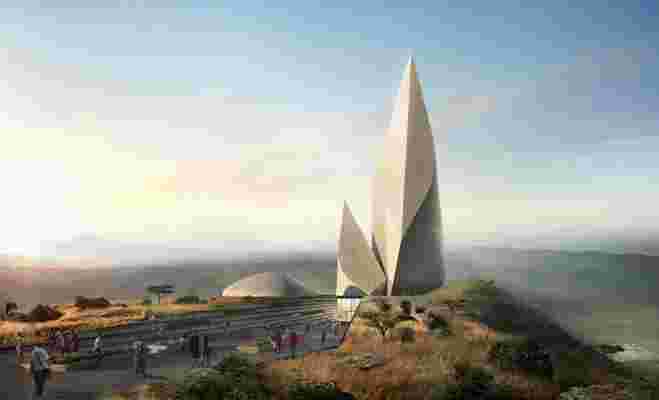The arc of human history would appear too long and diverse to neatly fit in any museum space. After all, the sky is the limit when it comes to all that the walls can contain. Which is likely one reason why it was Studio Libeskind that was selected to design the forthcoming Museum of Human History in Kenya. Libeskind's quartzlike buildings appear to slice and cut into the sky, reflecting everything that's above, when in actuality they simply contain some of what's down below.
Ngaren: The Museum of Humankind will be located in Kenya’s Rift Valley, a site researchers consider to be the cradle of humankind. Indeed, in 1984, a nearly completed skeleton of a young boy who lived some 1.5 or 1.6 million years ago was unearthed. They named him Turkana Boy; it's estimated the child died between the ages of 7 and 11. The groundbreaking discovery wzas made by the Kenyan paleoanthropologist Richard Leakey, who is now the founder of the forthcoming museum.
According to Leakey, this won't be similar to any other museum in the world. In fact, far from it. "Ngaren is a call to action," Dr. Leakey expressed in a statement. "As we peer back through the fossil record, through layer upon layer of long extinct species, many of which thrived far longer that the human species is ever likely to do, we are reminded of our mortality as a species."

The design was inspired by the shapes of ancient hand axes.
The form of Libeskind's design were inspired by the shapes of ancient hand axes, among the first prehistoric tools to be used. “I created a series of dramatic spaces within the museum that are architecturally dynamic and provocative, creating a unique context for the museum’s exhibitions that does not pacify artifacts but enhances and enlivens them,” said Daniel Libeskind in a statement. The exhibitions the architect is referring to will explore the science behind climate change while also celebrating the evolutionary processes that shape us.
Ngaren is expected to be completed and open to the public in 2024.
